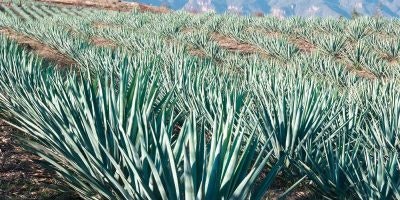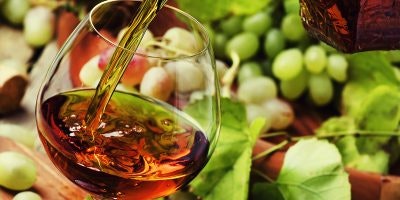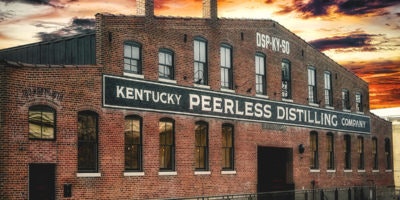Scottish whisky regions are often used as a guideline for taste, by brand ambassadors and whisky enthusiasts alike. We decided to take a closer look at each of the regions, and examine their importance as a taste indicator.
The most current regional map of the Scotch Whisky Association mentions 113 distilleries. An incomprehensible number, but one that’s actually already outdated. Numerous new Scottish distilleries have opened their doors in the last twelve months. To create some order to this chaos, whisky regions are used as a way to categorize single malts.
The traditional five regions as we know them today, are protected by law in the Scotch Whisky Regulations 2009. Which regions are there? With which flavors are they historically associated? What are some of the well-known distilleries in each of them? And should you ultimately care?
Highlands
Geographically the largest whisky region, it encompasses almost the whole of Scotland above Glasgow and Edinburgh. Highland whiskies are deemed as rounded, robust and dry, sometimes with a hint of smoke.
Glenmorangie Distillery / Photo Credit: Wolf Gang
In the north you have classic distilleries such as Clynelish, Glenmorangie and Dalmore, while the western area counts such favorites as Oban and Ben Nevis. In the east and south you’ll find Glen Garioch, Royal Lochnagar and Edradour. Then there are island distilleries like Arran, Highland Park and Talisker, which you’ll often see mentioned as a separate Island region, but they officially belong to the Highlands.
Speyside
Smaller in size than Rhode Island, the Speyside region is home to half of Scotland’s malt whisky distilleries. Named after the River Spey, its whiskies are noted for their elegance and complexity. Some of the most well-known and best-selling whiskies hail from Speyside, such as Glenfiddich and The Glenlivet. Another Speyside brand, maybe the most luxurious of them all, is The Macallan. (Editor’s Note: Confusingly, though The Macallan bottle labels state “Highland Single Malt Scotch Whisky”, the brand prefers to be known as a Speyside whisky. As Speyside is technically a subregion of the Highlands, it is allowed.)
Glenlivet Distillery / Photo Credit: Iain Hinchliffe
Lowland
A very modest region with less than a dozen malt distilleries, the whiskies produced in the Lowland area of Scotland are traditionally associated with triple distillation. Nowadays only Auchentoshan employs this production method. Lowland whiskies are usually light, soft and mellow, and gentle on the palate.
Auchentoshan Distillery / Photo Credit: Auchentoshan
Campbeltown
At its peak, Campbeltown was home to more than 30 distilleries. Now there are only three: Springbank, Glen Scotia and Glengyle. The whiskies from this remote town at the southern end of the Mull of Kintyre (famously celebrated in song by Paul McCartney) are robust and carry the salty tang of the sea.
Springbank Distillery / Photo Credit: Springbank
Islay
A small island off the west coast of Scotland, Islay may only be 25 miles long, but it is home to some of the most iconic distilleries in the world. Lagavulin, Ardbeg and Laphroaig are all situated within a few miles of each other. The whiskies from Islay are pungent and powerful, and characterized by their (medicinal) peat smoke.
Ardbeg Distillery / Photo Credit: Helen Clarke
The (non)sense of whisky regions
The five Scottish whisky regions are often used to classify and categorize different distilleries. Looking for something smoky? Let’s visit Islay. Want something light and hyper-accessible? Try a Lowland whisky. Or maybe something a bit more fruity, with subtle spices? Then Speyside might be your thing. But is this really true? Reality, as is always the case, is more nuanced. Scottish whisky regions were established over a very long period of time. And not necessarily because of a perceived distinction in flavor profile.
Scottish Barley / Photo Credit: Harry McGregor
For example, did you have any idea that the regional classification of Scottish malt whiskies has its origin in 18th century excise laws? The Wash Act of 1784 drew the infamous ‘Highland Line’, which divided Scotland into the Highlands and the Lowlands. It wasn’t until almost a century later that other regions were being recognized. Islay and Campbeltown for example, because of the amount of licensed distilleries in those places.
Back then, many distilleries were an extension of a farm. Owners grew and malted their own barley. They cut their own peat, probably from a nearby bog. Single estate distilleries were the norm, not the exception. This was before the world became a smaller place. First through the industrial revolution, then because of the technological and digital revolutions.
Whisky Production Today
Nowadays barley for whisky production is grown all over the world. Malting happens in big centralized facilities, as does the bottling. Chances are whiskies from different distilleries are diluted to bottling strength using the same neutral water. All of this is the result of progress and efficiency.
Non-peated whisky is produced on Islay. By Bunnahabhain and Bruichladdich for example, but also by Caol Ila, who make unpeated spirit specifically for the Johnnie Walker blends. Conversely, in Speyside The Balvenie, The Glenlivet and Glenfiddich experiment with peated whiskies. Diageo’s modern Roseisle distillery has been specially designed to produce a range of different characters of spirit.
Maybe once upon a time there was whisky that could be dubbed typically Speyside or typically Lowlands. But the whisky industry has passed that point a long time ago. Whisky regions are ultimately nothing more than a very rough guideline for flavor, but shouldn’t be looked at as gospel.
So did you drink a smoky, medicinal Islay whisky once, didn’t like it, and have since avoided everything from Islay? That’s a mistake. There’s a whisky suited for you in (almost) every one of the five Scottish whisky regions. Happy exploring!
With Distiller, you’ll always know what’s in the bottle before you spend a cent. Rate, Review and Discover spirits! Head on over to Distiller, or download the app for iOS and Android today!



